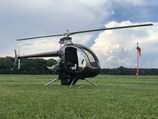Here are some of the most commonly asked questions about experimental helicopters and the XE Series line of helicopters.
Do I need a pilot's license to fly an XEL?
No, the XEL is a Part 103 legal ultralight helicopter. However, it is important to get some training before attempting to fly. In fact, all kit prices reflect a $5,000.00 training incentive discount as long as you can show you have either a helicopter pilot’s license or helicopter training with a solo hover endorsement. Either way you are going to spend the $5,000.00 so spend it getting the solo hover endorsement if you are new to flying helicopters.
Can I get training for my hover endorsement in any of the XE Series helicopters?
As a single seat personal helicopter, no initial hover training with an instructor can be done in any of the XE Series helicopters. Any helicopter flight training facility can train you for your solo hover endorsement. If you can hover an R22 or Switzer 300, you should have no issues in any of the XE Series helicopters. A quick google search should give you an idea of available helicopter training services and prices in your area.
Do I need a license to fly an experimental helicopter (XE, XE285 & XET)?
Yes, you must possess a minimum of an unrestricted private pilot license and a current medical to legally fly the XE, XE285 or XET. The aircraft must be registered Amatuer Built Experimental with the FAA (“N” numbered) and pass an airworthiness inspection. For further information, go to the FAA web site and download Advisory Circular (AC) 20-27G, Certification and Operation of Amateur Built Aircraft. There is a link to it on our LINKS page.
Do I need a helicopter license to fly an experimental helicopter (XE, XE285 & XET)?
No, per 14CFR.61.31, as long as the helicopter is registered with an experimental certificate, you possess an unrestricted private pilot's certificate and have a current medical. There is a link to it under our LINKS page. Look under Section L, 2, iii, B.
Can I fly an experimental helicopter with my Light Sport License?
No. Unfortunately the FAA does not allow any helicopter with any type of registration (experimental or helicopter) to be be flown with a Light Sport, Recreational or Glider license. Fortunately there is the XEL Ultralight helicopter in which you do not need a license for.
Can I legally land a helicopter in my backyard?
The FAA doesn't prohibit helicopters from operating most places, so you should be able to land one in your backyard if you can do so safely and not upset your neighbors.
Can I use my experimental helicopter to get my rotory add on to my private pilot's license?
Short answer is yes. If you already have your fixed wing pilot’s license, you will need to find a CFI (Certified Flight Instructor) who will work with you and your experimental registered helicopter. For a single seat experimental helicopter such as the XE, XE285 or XET, once you have learned to hover, you can take instruction in any 2-place trainer helicopter and then use your own experimental helicopter to practice and perfect the maneuvers at a greatly reduced hourly cost.
What is the maximum pilot weight for any of the XE Series line of heliopters?
As a rule, 240lbs. This is due to C/G purposes only. But depending on which version XE Series you get and options, that number may be a little flexible.
If you still have questions, please feel free to contact us. These FAQs are questions that our guest have actually asked us and we've listed here to give you the best information available and hopefully answer some of the same type questions that you may have.
FUN FACTS SECTION
History Lesson Time. Why do all U.S. registered aircraft "N" numbers start with the letter N?
It has to do with radio call signs. As early as 1909, the U.S. Navy had started using the letter "N" in its call signs for radio communications. By 1913, the U.S. had complete rights through international agreements to use the letters N, K and W for all radio communication call signs.
The U.S. received the letter "N" as its nationality designator under the International Air Navigation Convention, held in 1919. The Convention prescribed an aircraft-marking scheme of a single letter indication nationality followed by a hyphen and four identity letters (for example, G-REMS). The five letters together were to be the aircraft's radio call sign.
The Government reserved the letter "N" for itself and assigned K and W for various radio stations along geographic lines. This is why all our radio and TV stations call sign start with K or W.
For the most part the letter "N" was restricted to aircraft that made international flights and compliance was voluntary. The earliest legal requirement for the N marking is found in the first general amendments to the Air Commerce Regulations in 1927. These amendments mandated that U.S. aircraft engaged in foreign air commerce display the N at the beginning of its identification markings. Soon after, this requirement was extended to all U.S. aircraft, regardless of whether they operated outside the U.S.
Storey Aviation, for all your purchasing, build and maintenance assistance needs or questions
